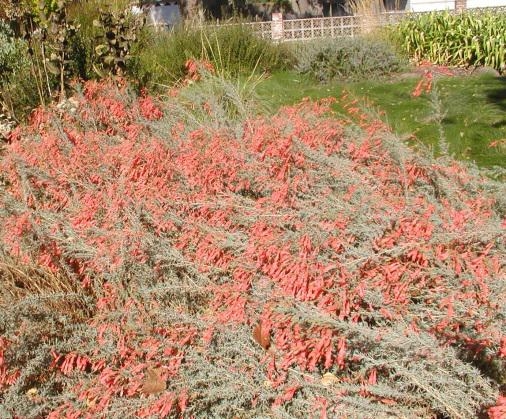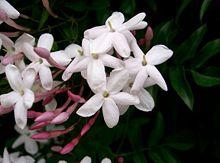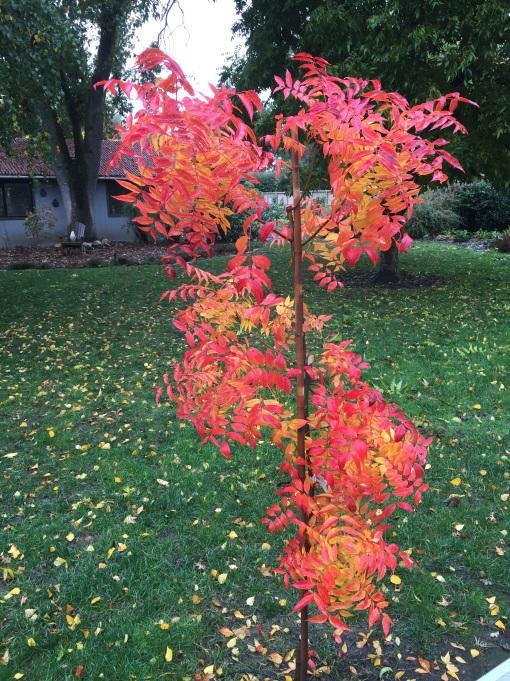|
Perennials: California Fuchsias (Zauschneria californica or Epilobium canum) (The name has been changed recently from Zauschneria to Epilobium, but either name will work when finding it with Google). A very bright fall blooming perennial that has several colors and cultivars, and there are other species as well. Colors are white, pink, orange and red. Grey foliage provides a nice contrast in the garden although some have green foliage and foliage can be wide or narrow leafed. It blooms in fall and is drought tolerant - though it thrives best with very moderate amounts of water in the Central Valley. It tolerates part shade but does best with full sun. Hummingbirds will visit the tubular flower for nectar. The one pictured here is in my front yard which is comprised mostly of native plants and I enjoy these blooms out my office window each fall. It spreads somewhat, but with diligence can be kept in bounds. The plants should be pruned back to ground level in early spring and they will commence to grow all summer to prepare for the bright fall show. For more information on various species and cultivars see: https://www.laspilitas.com/groups/california-fuchsia.html |
 |
 |
Vines: Pink Jasmine (Jasminum polyanthum) is a fast-growing vine that has glossy green foliage and features pink buds that open to very fragrant and abundant small white flowers in the spring. This plant can be trained on a trellis or arbor and can also be allowed to roam as a ground cover. It is hardy in the Central Valley (USDA Zone 9). It can climb to 20 feet or more, but it can also be contained to a small trellis by pruning to train or growing it in a container. It handles full sun or part sun and needs regular watering. It is long lived as I have had one for over 20 years but, recently I inadvertently killed it. The container it was in was being irrigated automatically with the lawn twice a week. The water for some reason was no longer draining and I did not detect the standing water in time to prevent it from killing the roots for lack of oxygen. Subsequently, I called a local nursery and picked one up to start over because it is a worthy plant to grow and enjoy. This time I planted it in the soil instead of a container and I have started it on a larger trellis. |
| Trees: The Chinese pistache (Pistacia chinensis) grows to a height of 25–35' and a spread of 25–35' at maturity. It is an excellent deciduous shade tree that grows in full sun with a variety of soil types: acidic, alkaline, loamy, moist, sandy, silty loam, and clay soils. It prefers well-drained soils. Its deep roots make it ideal for areas close to sidewalks and driveways where shallow-rooted trees can raise havoc with hardscapes. It also grows well in drought conditions. If shaded, it can become misshapen; but it is commonly planted as a street tree and in parking lots for shade. The best part is the fall foliage colors which are reds, yellows and oranges. The one shown here is a two-year-old in my garden that produces all the expected spectacular colors. The Chinese pistachio does not produce nuts, but if a male Chinese pistache tree is present, the female tree which blooms in April will have blooms that develop into clumps of brilliant red berries in the fall, changing to a blue-purple hue in the winter. Birds enjoy these berries. |  |